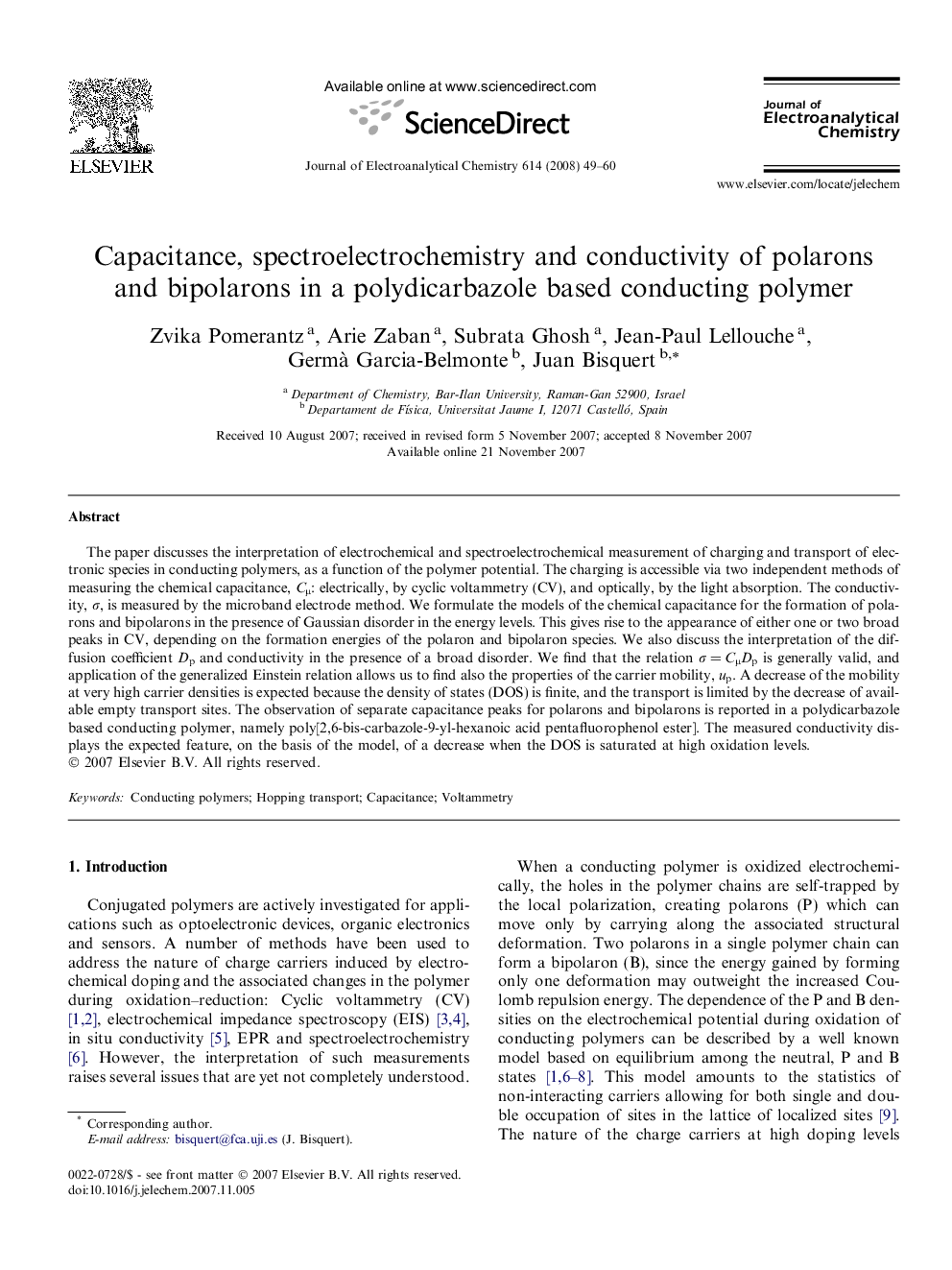| Article ID | Journal | Published Year | Pages | File Type |
|---|---|---|---|---|
| 220656 | Journal of Electroanalytical Chemistry | 2008 | 12 Pages |
The paper discusses the interpretation of electrochemical and spectroelectrochemical measurement of charging and transport of electronic species in conducting polymers, as a function of the polymer potential. The charging is accessible via two independent methods of measuring the chemical capacitance, Cμ: electrically, by cyclic voltammetry (CV), and optically, by the light absorption. The conductivity, σ, is measured by the microband electrode method. We formulate the models of the chemical capacitance for the formation of polarons and bipolarons in the presence of Gaussian disorder in the energy levels. This gives rise to the appearance of either one or two broad peaks in CV, depending on the formation energies of the polaron and bipolaron species. We also discuss the interpretation of the diffusion coefficient Dp and conductivity in the presence of a broad disorder. We find that the relation σ = CμDp is generally valid, and application of the generalized Einstein relation allows us to find also the properties of the carrier mobility, up. A decrease of the mobility at very high carrier densities is expected because the density of states (DOS) is finite, and the transport is limited by the decrease of available empty transport sites. The observation of separate capacitance peaks for polarons and bipolarons is reported in a polydicarbazole based conducting polymer, namely poly[2,6-bis-carbazole-9-yl-hexanoic acid pentafluorophenol ester]. The measured conductivity displays the expected feature, on the basis of the model, of a decrease when the DOS is saturated at high oxidation levels.
